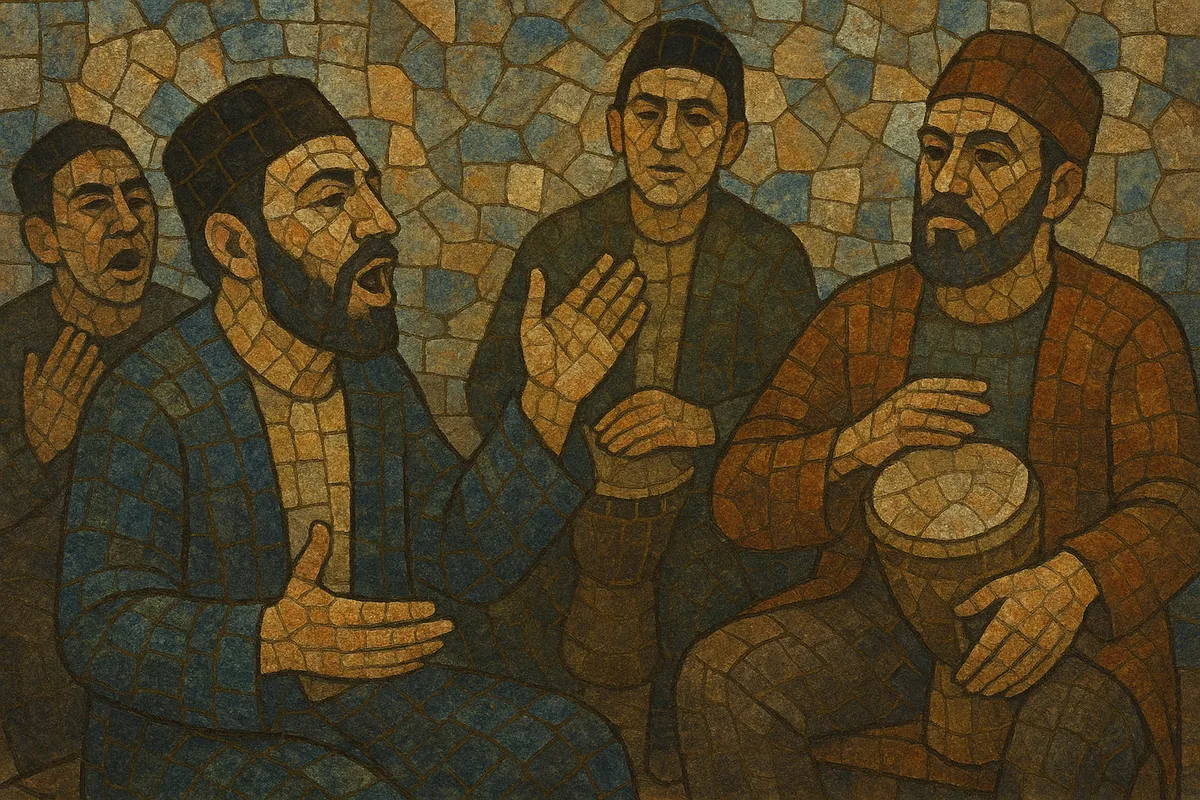Meyxana (meykhana) is an Azerbaijani tradition of improvised, rhymed, and rhythmically delivered verse performed in a social setting, often at weddings and community gatherings. Performers exchange extemporaneous couplets in a competitive, humorous, or satirical manner, maintaining a shared rhyme and meter while reacting to each other and the audience in real time.
While historically unaccompanied or supported only by handclaps and simple percussion (e.g., naghara), since the late 1990s and 2000s meyxana has also been delivered over looped beats, reflecting contact with hip hop aesthetics. The focus remains on quick-witted text craft, internal rhyme, proverbial references, and audience rapport, making it a uniquely Azerbaijani form of verbal-musical improvisation.
The word “meyxana” is etymologically linked to the Persian term for tavern, but the performance practice in Azerbaijan developed as a communal, vernacular art of extemporaneous verse. Its roots lie in Azerbaijani oral-poetic culture (including ashiq/ashyg traditions) and the broader modal-improvisatory ethos of the region. In its earliest phases, meyxana was largely unamplified, delivered in parlors, courtyards, and festive gatherings, with performers trading verses built on shared rhyme schemes and syllabic meters.
During the late Soviet period, especially the 1960s–1970s, meyxana coalesced into a recognizable public genre in urban centers like Baku. Although subject to the norms of the period, it flourished in semi-formal events and weddings, where practitioners honed rapid-fire improvisation, social satire, and tightly controlled scansion. By the 1980s, a cohort of charismatic performers helped fix stylistic expectations—monorhyme, quick topicality, and call-and-response exchange—laying the foundation for its modern identity.
After Azerbaijan’s independence in the 1990s, meyxana moved from strictly local gatherings to recordings, television appearances, and large-stage events. Some artists began performing over drum-machine loops and DJ backings, engaging with hip hop and pop production while preserving the improvisatory duel at the genre’s core. Competitions and televised showcases broadened its audience and codified both battle etiquette and crowd participation cues.
Today, meyxana remains a living, adaptive form: performers balance humor, satire, and moral commentary with respect for traditional meter and rhyme. The style coexists with modern beat-driven formats, and its influence is evident in local freestyle and battle cultures, even as it retains a distinct Azerbaijani identity rooted in oral poetry and communal performance.


